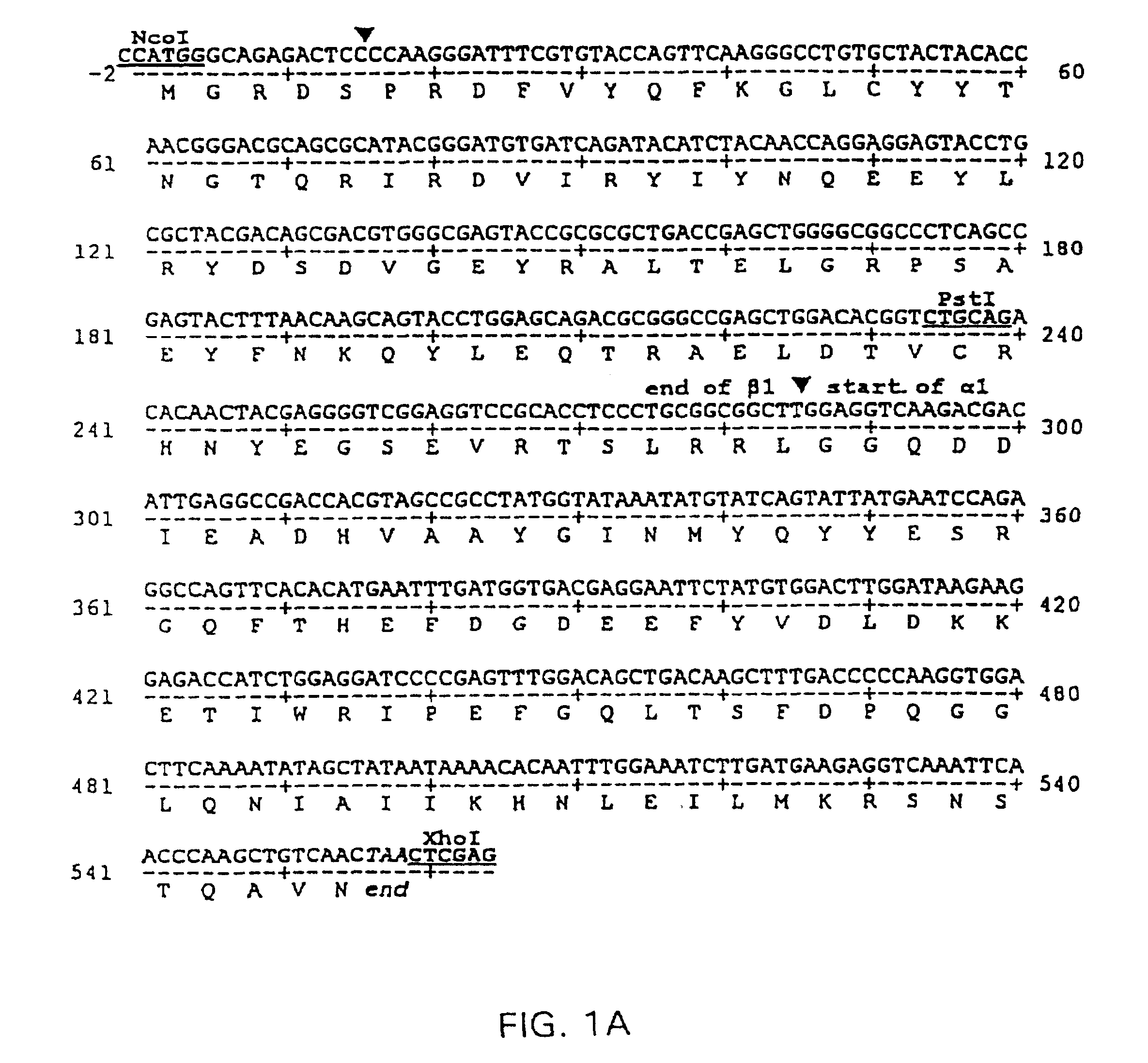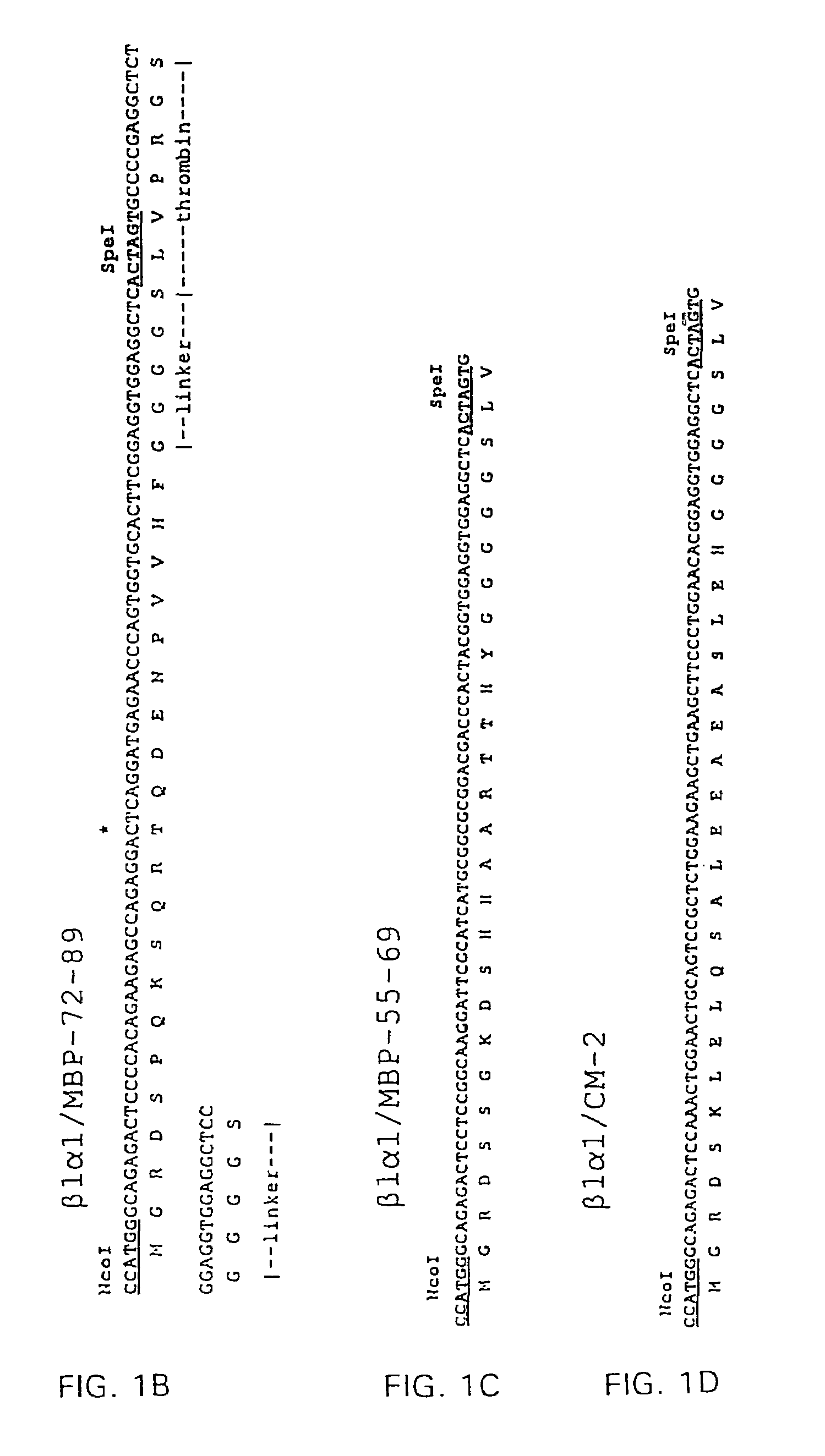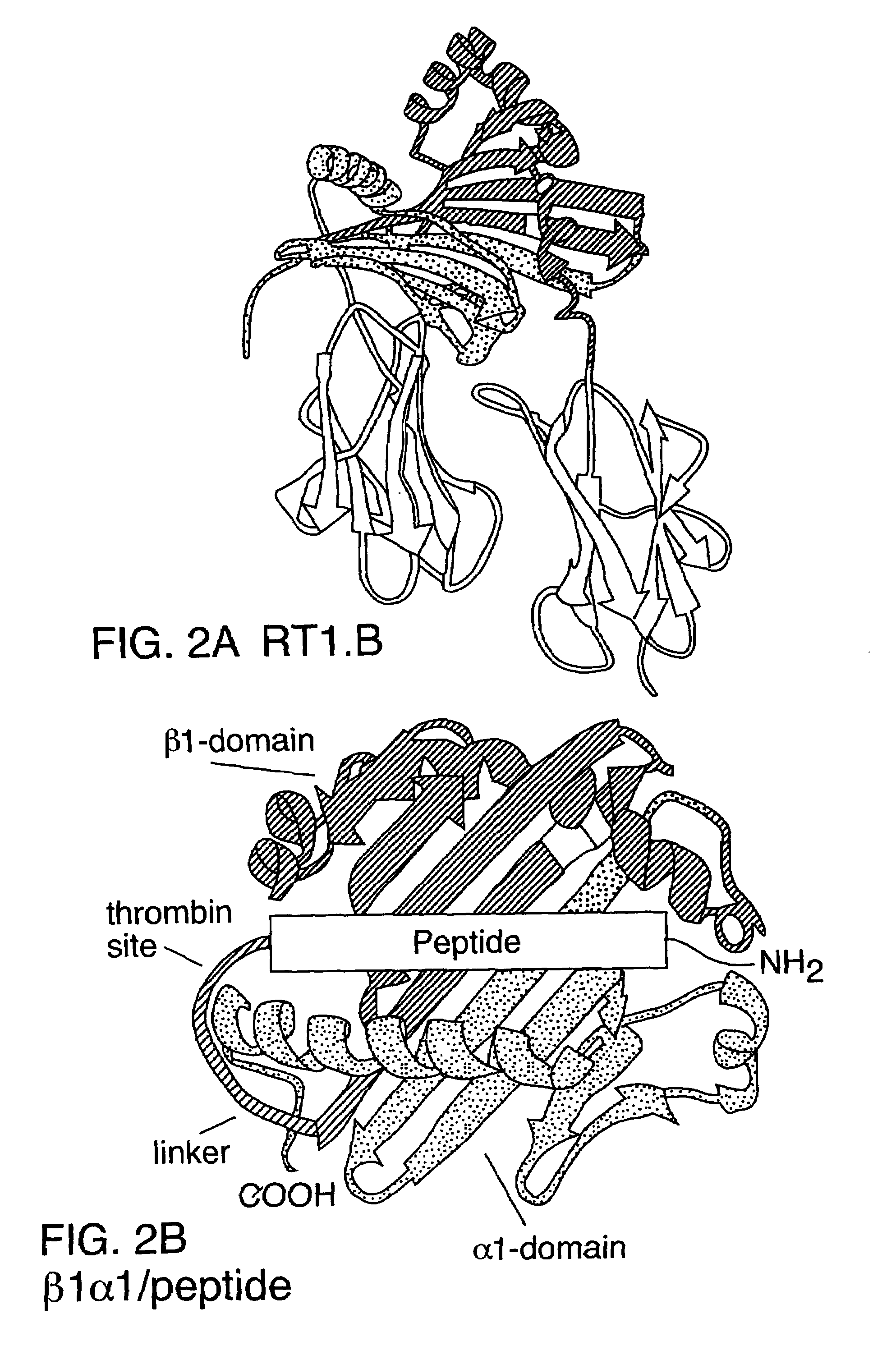Recombinant MHC molecules useful for manipulation of antigen-specific T-cells
a recombinant mhc and t-cell technology, applied in the field of recombinant mhc molecules useful for manipulating antigen-specific t-cells, can solve the problems of large complexes, unstable t-cell/mhc/antigen complexes, and inability to detect, quantify or purify antigen-specific t-cells with widespread success, etc., to achieve easy loading, easy production, and easy purification in large quantities
- Summary
- Abstract
- Description
- Claims
- Application Information
AI Technical Summary
Benefits of technology
Problems solved by technology
Method used
Image
Examples
example 1
Cloning, Expression and In Vitro Folding of β1α1 Molecules
[0113]A prototypical nucleic acid construct was produced that encoded a single polypeptide chain with the amino terminus of the MHC class II α1 domain genetically linked to the carboxyl terminus of the MHC class II β1 domain. The sequence of this prototypical construct, made from the rat RT1B α- and β-chain cDNAs is shown in FIG. 1A (Seq. I.D. No. 1).
[0114]RT1B α1- and β1-domain encoding cDNAs were prepared by PCR amplification of cloned RT1.B α- and β-chain cDNA coding sequences (α6, β118, respectively) obtained from Dr. Konrad Reske, Mainz, FRG (Syha et al., 1989; Syha-Jedelhauser et al., 1991). The primers used to generate B1 were 5′-AATTCCTCGAGATGGCTCTGCAGACCCC-3′ (XhoI 5′ primer) (Seq. I.D. No. 9); 5′-TCTTGACCTCCAAGCCGCCGCAGGGAGGTG-3′ (3′ ligation primer) (Seq. I.D. No. 10). The primers used to generate α1 were 5′-CGGCGGCTTGGAGGTCAAGACGACATTGAGG-3′ (5′ ligation primer) (Seq. I.D. No. 11); 5′-GCCTCGGTACCTTAGTTGACAGCTTGGGT...
example 2
β1α1 Molecules Bind T Lymphocytes in an Epitope-Specific Manner
[0119]The β1α1 molecule produced as described above was tested for efficacy (T-cell binding specificity) using the Experimental Autoimmune Encephalomyelitis (EAE) system. EAE is a paralytic, inflammatory, and sometimes demyelinating disease mediated by CD4+ T cells specific for central nervous system myelin components including myelin basic protein (MBP). EAE shares similar immunological abnormalities with the human demyelinating disease MS (Paterson, 1981) and has been a useful model for testing preclinical therapies for the human illness (Weiner et al, 1993; Vandenbark et al., 1989; Howell et al., 1989; Oksenberg et al., 1993; Yednock et al, 1992; Jameson et al., 1994; Vandenbark et al., 1994). In Lewis rats, the dominant encephalitogenic MBP epitope resides in the 72-89 peptide (Bourdette et al., 1991). Onset of clinical signs of EAE occurs on day 10-11, and the disease lasts four to eight days. The majority of invadi...
example 3
β1α1 Molecules Conjugated with a Fluorescent Label
[0126]To avoid using a secondary antibody for visualizing the interaction of β1α1 / peptide molecules with TCR (such as OX-6, used above), a β1α1 molecules directly conjugated with a chromophore was produced. The Alexa-488™ dye (A488; Molecular Probes, Eugene, Oreg.) has a spectra similar to fluorescein, but produces protein conjugates that are brighter and more photo-stable than fluorescein conjugates. As is shown in FIG. 4, A488-conjugated β1α1 (molar ratio dye / protein=1), when loaded with MBP-69-89, bound to the A1 hybridomas (MCI=300 Units), whereas empty β1α1 did not.
PUM
| Property | Measurement | Unit |
|---|---|---|
| weight | aaaaa | aaaaa |
| pH | aaaaa | aaaaa |
| pH | aaaaa | aaaaa |
Abstract
Description
Claims
Application Information
 Login to View More
Login to View More - R&D
- Intellectual Property
- Life Sciences
- Materials
- Tech Scout
- Unparalleled Data Quality
- Higher Quality Content
- 60% Fewer Hallucinations
Browse by: Latest US Patents, China's latest patents, Technical Efficacy Thesaurus, Application Domain, Technology Topic, Popular Technical Reports.
© 2025 PatSnap. All rights reserved.Legal|Privacy policy|Modern Slavery Act Transparency Statement|Sitemap|About US| Contact US: help@patsnap.com



